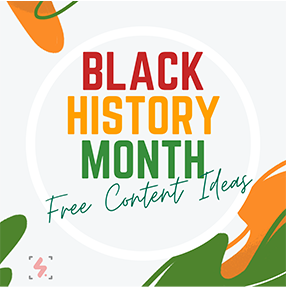WHEEL of WONDER
Getty Images. Bob Parker and the “Big Wheel.”
Not going to school is exciting: no morning alarm, no homework, no bedtime. But, for me, it was beyond exciting for one singular reason: being able to watch Bob Barker as he guided quirky and overly enthusiastic contestants through the consumer juggernaut that was “The Price is Right.”
Near the end of the episodes, I watched in awe as the gigantic wheel spun, fast at first and then at a crawl, as contestants learned if they would earn the right to compete in the most prestigious competition in game show history–the Showcase Showdown.
If those memories excite you, there’s no reason that bringing the colorful spinning wheel into your class won’t only get your kids excited, but it can also help make them better filmmakers.
Student filmmakers, especially novice ones, often can’t appreciate all the technical considerations at their fingertips that could help them become stronger visual filmmakers. They don’t know what they don’t know.
Enter the website Wheel of Names.
The site allows teachers to rename the sections of a wheel, and it offers students and teachers the excitement of discovering what the wheel will finally “say” after a virtual spin. It’s as close as anyone will ever get to being Bob Parker (or Drew Carey) on the “Price as Right.”
The website offers a terse tutorial regarding how to customize the wheel, so let’s skip ahead with how our film class uses this essential tool to create buzz, excitement, anticipation, and learning.
Our film class will have anywhere from 4-6 groups working on a short film, and each one of those groups must have a cinematographer.
Below are options to customize the wheel (you can use as few or as many as you like):
rack focus
high key lighting
wide lens (24-35 mm)
whip pan
tracking shot
chiaroscuro lighting
dutch angle
dolly zoom
low key lighting
ultrawide lens (24mm to 18mm)
telephoto (70mm or greater)
fisheye lens (17mm or less)
For each element or technique that the wheel “lands” on, the students must incorporate that element or technique in their project. (we think that three elements/techniques in a project is plenty, but it’s your call).
But, here’s where the excitement and anticipation of the elements within the wheel lead to real, tangible learning based on research and creativity.
It helps to ask for several pieces of information from students:
Define the “selected” element or technique.
What do you have to know to be able to use the element or execute the technique?
Find an example from a film or short story and explain how/why it works.
Where might you creatively use this element or technique in your story?
How does using the element or technique affect your storytelling (what does it say about a character’s subjective feelings)?
We believe the last question is the most important because it asks kids to be intentional filmmakers and explain how using a chosen element or techniques adds meaning to their visual storytelling (if you haven’t read our article on 4D filmmaking, take a few moments and go read that).
For example, let’s say that students must incorporate a telephoto lens in their project. A student does research, finds that a telephoto lens brings something far away closer to the camera. Further research informs them how The Graduate (1967) creatively uses this technique to create tension and reveal characterization near the climatic scene.
The telephoto lens places Ben far away from us.
After Benjamin’s car dies, he runs to stop the woman whom he loves from marrying a man whom she doesn’t love. MIke Nichols and the cinematographer chose to show Benjamin running towards the camera, but they want to accentuate three other ideas: 1) Benjamin’s determination at stopping the wedding and 2) the futility of the task and 3) time is running out. Using a telephoto lens, they place Benjamin far away from the camera as he runs towards it.
Even when he runs, he doesn’t appear to gain any ground thanks to the stationary telephoto lens.
Here’s the result: Benjamin looks small in the frame as he runs, but guess what? Because of the telephoto lens (and his distance from the camera), no matter how far or how hard he runs, he never seems to get any closer. It takes forever, and the audience wonders if he’s ever going to make it to the wedding in time (the shot lasts 21 seconds). Creatively manipulating the telephoto lens underscores Benjamin’s fierce determination against the greatest enemy of all–time. Most importantly, this creates great tension for the audience-will he stop the wedding in time?
Now, ask your students to do something similar: what did they learn from their research and how can they use that knowledge in their films to tell better visual stories using technical elements and techniques (aka film language).
At the end of the day, is the colorful spinning wheel the key to your student’s success as filmmakers? No, it’s a gimmick, but it’s a fun one at that. Use that gimmick to expose your students to new and exciting pieces of equipment and techniques that they can not only explore on their own, but that they can incorporate into their own wheel house and tell better visual stories with their own creativity.
Works Cited: Images
Getty Images. “Who Directs the Price is Right?” 30 March 2021. Web. 22 June 2023.
Movie Market. “The Graduate Movie Poster Artwork” Web. 22 June 2023.
The Graduate. Directed by Nicols, Mike. United Artists, 1967.
Meet the Author, Adam Russell
Adam Russell lives and works in Marietta, Georgia. He is finishing his 21st year of teaching both film and literature. A 13 year veteran of teaching IB Film, Adam seeks to constantly refine and demystify the art of teaching with the IB framework to help teachers and students find success. In his spare time, he writes feature length scripts and consumes anything and everything that he can get his hands on regarding film: screenplays, films, video essays, books on screenwriting, etc.














Got shaky footage? No problem! In this quick tutorial, learn how to use Warp Stabilizer in Adobe Premiere Pro to smooth out your shots effortlessly.